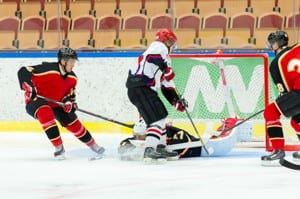 One of the biggest sports in the US and Canada is undoubtedly Ice Hockey. It gets millions of viewers each week, mainly tuning in to watch biggest league in the world, the NHL. The fast paced game means that it’s one that draws in spectators, but from a betting perspective, the competitive nature of these games makes them a hot bed for punters as well.
One of the biggest sports in the US and Canada is undoubtedly Ice Hockey. It gets millions of viewers each week, mainly tuning in to watch biggest league in the world, the NHL. The fast paced game means that it’s one that draws in spectators, but from a betting perspective, the competitive nature of these games makes them a hot bed for punters as well.
As mentioned, it’s undoubted that the main appeal from the sport comes from the Americas, but Ice Hockey is actually a massively popular market outside of this area, with some massively developing leagues situated throughout Europe.
Because of the increasing global appeal of the sport, it’s lead to many bookmakers outside of the US offering up comprehensive betting markets on both the NHL and European/ world leagues.
Competition in the gambling industry is a punters best friend and when you get to a point where bookmakers are trying all they can to gain a following through that sport, the range and depth of markets increase as a result. Ice Hockey, whilst still an emerging market in Europe, is definitely one that has gained serious traction over the last few years and likely one that’s going to keep expanding as we move forward.
- In this Article:
- Bookmakers
- How to Bet
- Betting Markets
- Betting Rules
- About
Best Ice Hockey Betting Sites
#1 – Coral
The first thing you will notice abou Coral is that they are very hot on their NHL coverage, which is to be expected. At the time of writing the NHL play-offs just so happen to be taking place and we noticed an increase in both coverage and the number of markets that are currently being offered as a result.
For each game you’ll be looking at targeting the 60 minute betting, money line, handicap betting, total over/under goals, home/away total goals, correct score and a host of other, slightly smaller markets. The total number is well in excess of 20 for each game in the NHL. Once noticeable difference is that Coral tend to keep their lingo to something that most sports bettors in the EU will be more familiar with. By this we mean that terms such as money line, props and game lines are kept to a minimum and are instead replaced with handicap bets, correct score and W-D-W bet types.
A great inclusion for Coral has to be the affiliation with their live streaming service. The range of games are of a good standard and they even include some of the NHL play off games, which will be a bit coop for them.
Outside of the NHL Coral will be targeting a lot of the major international European games that are on offer. These will include both the IHF World Championships and the Euro Hockey Tour. Their coverage of European domestic leagues is probably the only section that suffer somewhat and whilst they do have games throughout the year, they are sporadic at best.
#2 – ComeOn
ComeOn may not be the most well known bookmaker in the industry, but they are an excellent choice if you are looking to bet on American Sports, especially Ice Hockey. What stood out for us in particular with ComeOn is that they covered a much wider range of leagues that even the two bookmakers above. The inclusion of both Canadian leagues and the AHL (American Hockey League) in the US, which is equivalent to a feeder league for the NHL, was particularly commendable.
To go with each league you were also able to get a number of markets to bet on. These included Money line, handicap, Over/under goals, 1st period winner, first to score, last to score, odd/even goals, exact score and handicap for over/under goals. We will say that this range isn’t as large as Coral, but it’s likely going to be more than enough for most punters.
We were also impressed with the coverage outside of the US and Canada, with games from the European Tour, European Challenge, World Championships and World Championships Division 1. ComeOn are also one of very bookmakers that provide Ice Hockey specific promotions, usually in the form of a free bet or deposit bonus when the higher profile matches are on.
How to Bet on Ice Hockey
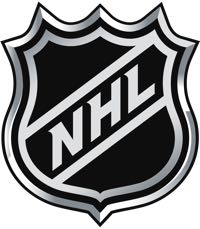 Betting on Ice Hockey isn’t always as straightforward as some sports. You often get three game line markets’ to choose from. The first is called the ‘line’ market which is basically the same as handicapping. The second is the ‘totals’ market where you choose the over or under on the amount of goals in a game. The third is the ‘money line’ which is basically the same as match betting or simply choosing a winner of the game.
Betting on Ice Hockey isn’t always as straightforward as some sports. You often get three game line markets’ to choose from. The first is called the ‘line’ market which is basically the same as handicapping. The second is the ‘totals’ market where you choose the over or under on the amount of goals in a game. The third is the ‘money line’ which is basically the same as match betting or simply choosing a winner of the game.
Betting Markets
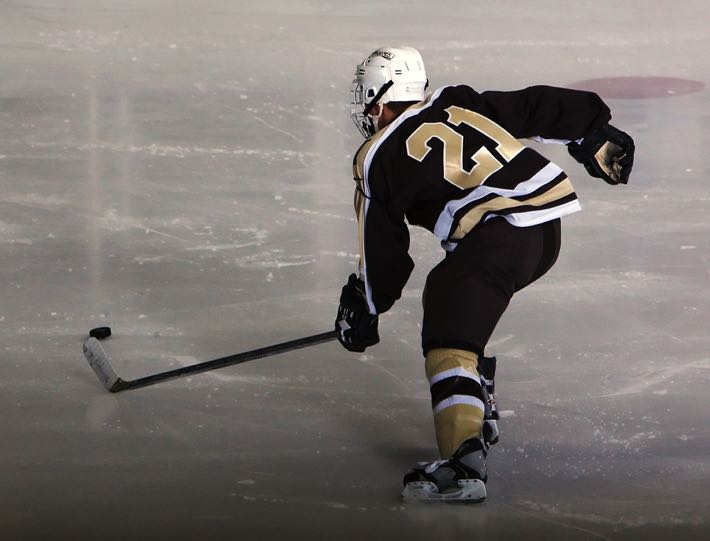
American sports – with Ice hockey being no exception – often have a different look to how their bets are set out. What’s key to remember is that they work very much the same as Euro betting markets, but are simply presented slightly differently.
Money Line
The main section is the game line and more specifically, the money line. The money line is essentially the price for that team to win, without any handicaps being applied. Most Euro bookmakers will have this written down in either a fractional or decimal format, but some may revert back to American style just for authenticity.
The odds will be highlighted as either a positive or negative number. The positive number is the amount you will get back for every 100 units you wager. The negative is the amount you need to wager to get 100 units returned.
Total Goals & Line
The next two most popular betting markets are the total goals and line, which is essentially the handicap for each team. Total goals will give you a line and then you need to decide whether you want to take over or under that line. If the result falls on that line then the bet will be seen as a push and stakes will be returned. The line bet is the handicap and this will be a certain number of goals added to the final result of the match to create the handicap result.
Ice Hockey Bets
- Money Line – The money line is where you bet on the outright winner of a match. In Ice Hockey there always has to be a result and there are no draws, so this is a 2 result market.
- Puck Line – The puck line indicates where one team gets a handicap of +0.5 and the other gets a handicap of -0.5 before the game starts.
- Game Totals – Simply choose the total number of goals in a match. This can be one of two ways; the first being a simple over or under line or the second a series of brackets, so 1-3, 4- 6 etc.
- Team Goals – Similar to the above market but instead of game totals you substitute each team’s goals in instead.
Ice Hockey (NHL) Betting Rules

A number of Ice Hockey games may finish in normal time as a draw, but we know that games in Ice Hockey will be played out to find a result, this is where overtime comes in to play. Most bookmakers will include overtime results and scores in their bets unless otherwise stated.
For the majority of markets, if a bet was to land as a tie or a result is not obtained throughout the course of the game, then dead heat rules will apply to that market. In 2-way markets push rules will apply to most bets and in 3-way markets bets will be settled in regulation time with the exception of ‘When will it end’ markets.
Rule Highlights
- Postponed Game – In the event of a game getting postponed or the venue changed then all bets will become void and returned.
- No Score – If there is no score in game then all odd or even bets will be returned. Same applies for team totals.
- Overtime Exclusion – All score markets exclude overtime.
A Brief History of Ice Hockey
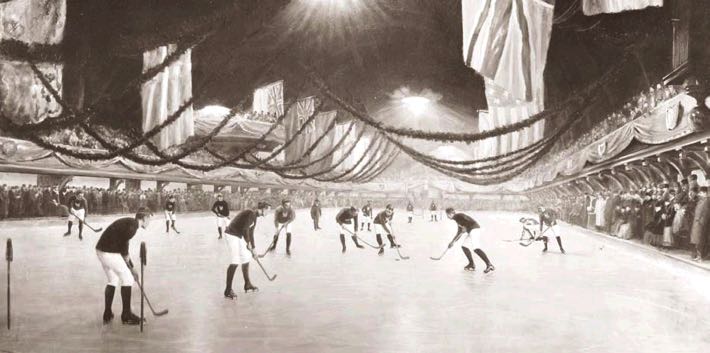
It is difficult to pin-point the exact origins of ice hockey. Many people believe that it has its origins in basic stick and ball games that were played in the United Kingdom and Ireland during the 18th and 19th centuries, with the likes of bandy, shinty and hurling having particular similarities to the game that we’ve come to know and love. Another sport that is likely to have had an influence over it is lacrosse, which is predominantly a North American sport, with ice hockey arriving in the United States of America alongside shinny and ice polo.
What we do know is that the first organised indoor version of a sport resembling ice hockey took place in the Canadian city of Montreal on the third of March back in 1875. Victoria Skating Rink was the location for the game, with two nine-player teams going head to head. Whilst there were plenty of minor differences from what we understand the sport to be today, such as the puck being made of wood and the goals being eight feet wide rather than six feet, there were certainly enough similarities for modern spectators to have recognised it.
The Professional Era
Scattered instances of players being paid to play hockey have been in the record books since the 1890s, but anyone caught doing so was banned from the amateur leagues that were the dominant ways of playing the sport in its more formative years. It was clear that the game was only moving in one direction, however, which was cemented in 1902 when the Western Pennsylvania Hockey League launched as the first to employ professionals. Soon it joined with teams from Michigan and Ontario to form the first entirely professional league, the International Professional Hockey League.
That was in 1904, with the WPHL and the IPHL hiring players from Canada, given that that was where the sport was at its strongest. That resulted in Canadian leagues paying players in order to keep them, which soon led to the International Professional Hockey League having no access to the best players, causing it to disband three years after its formation. In 1910, Montreal saw the formation of the National Hockey Association, which moved to further refine the rules of ice hockey. It re-organised to become the National Hockey League in 1917, expanding into the United States of America.
How the Game Is Played

It is not uncommon for people to place bets on a sports that they have no real knowledge of. That is far from ideal, essentially handing your money straight to the bookmaker unless you have a huge amount of good fortune. Rather than going into your betting strategy almost entirely blind, it is at least worth learning a small amount about the sport that you’re going to place wagers on. We will start with the fact that ice hockey games are played on a hockey rink, with six players on ice skates on either side at the start of a game.
Positions
One of these six players is the goaltender, with the aim being to score goals against the opposition side by hitting the vulcanised rubber puck into the other team’s goal. The puck cannot be kicked with a player’s ice skates, though unintentional redirections are allowed. Since the 1930s, forward passes are allowed, but players can be caught offside in a similar manner to association football. Substitutions are allowed, with teams often changing the entire defensive or forward unit in what is known as a ‘line change’.
Clock
Professional ice hockey games consist of three periods that last 20 minutes each. The clock only runs when the puck is in play, meaning that games do tend to last for more than a strict hour. If a tie occurs in games where a result is needed, such as the NHL’s play-offs, an overtime period of 20 minutes is played until a goal is scored. In international matches as well as the likes of the NHL regular season, an overtime period will be followed by a penalty shootout if there still hasn’t been a winner decided.
The Ice Hockey Leagues

As you might imagine, ice hockey is like other sports, insomuch as it has spread and grown out from its place of original. Whilst the NHL is the biggest and best-known ice hockey league on the planet, it isn’t the only one. Different countries have their own ice hockey leagues, with some of them being more successful than others. Here is a quick look at some of the various leagues around the world that play host to ice hockey matches on a regular basis:
The National Hockey League
 After the National Hockey Association, which had been formed in 1909, was suspended, a meeting took place at the Windsor Hotel in Montreal. This was on the 26th of November 1917, with the result being the formation of the National Hockey League, with the intention being that it would take over from the NHA as one of the leagues that would contest for the Stanley Cup on an annual basis. By 1926, after numerous different mergers and the folding of several leagues, the NHL was the only one left competing for the trophy.
After the National Hockey Association, which had been formed in 1909, was suspended, a meeting took place at the Windsor Hotel in Montreal. This was on the 26th of November 1917, with the result being the formation of the National Hockey League, with the intention being that it would take over from the NHA as one of the leagues that would contest for the Stanley Cup on an annual basis. By 1926, after numerous different mergers and the folding of several leagues, the NHL was the only one left competing for the trophy.
The NHL was ‘national’ on account of the fact that it initially had just four teams competing in it, all of which were from Canada. In 1924, a decision was taken to expand into the United States of America, at which point the Boston Bruins joined. Since then, the league has been both American and Canadian teams competing in, though between 1942 and 1967 there were on six teams. An expansion saw the league double in size, then increasing by the same amount in 1974. In 1979 three more teams were added to see a total of 21 sides competing.
Teams in the NHL
By 2021, the NHL had expanded to include 32 teams, all of which are governed from the NHL’s head office in Manhattan, New York. That has been the case since 1989, which was when it moved from Montreal. The players in the NHL come from countries all over the world, with 20 different nations represented at the time of writing. The majority of players still come from Canada, but the US and Europe also send high numbers of players to play in the league, which is why it is considered the best in the world. Here are the 32 teams that compete, with an asterisk next to the Original Six:
- Boston Bruins*
- Buffalo Sabres
- Detroit Red Wings*
- Florida Panthers
- Montreal Candiens*
- Ottowa Senators
- Tampa Bay Lightning
- Toronto Maple Leaves*
- Carolina Hurricanes
- Columbus Blue Jackets
- New Jersey Devils
- New York Islanders
- New York Rangers*
- Philadelphia Flyers
- Pittsburgh Penguins
- Washington Capitals
- Arizona Coyotes
- Chicago Blackhawks*
- Colorado Avalanche
- Dallas Stars
- Minnesota Wild
- Nashville Predators
- St. Louis Blues
- Winnipeg Jets
- Anaheim Ducks
- Calgary Flames
- Edmonton Oilers
- Los Angeles Kings
- San Jose Sharks
- Seattle Kraken
- Vancouver Canucks
- Vegas Golden Knights
The league is split into the Eastern Conference, which is then split into Atlantic and Metropolitan, and Western Conference, which involves Central and Pacific. Two points are awarded to winning teams, one point to those that lose in overtime or a shootout and no points for a loss in regulation time. Teams play 82 games in the regular season, which is 41 home and away, with 26 of them coming in their own geographical division, 24 games against the eight remaining non-divisional intra-conference opponents and 32 against every team in the other conference twice.
Elite Ice Hockey League
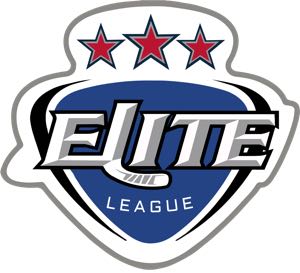 Formed in 2003 when the Ice Hockey Superleague collapsed, the Elite Ice Hockey League is the top-flight division of the sport in the United Kingdom. A series of promotions and relegations are carried out with the National Ice Hockey League, with each division hosting ten teams. The league has representatives from all four home nations, making it the only division in any sport in the UK that does so. Just as the NHL relies on players from outside the US, so too does the Elite Ice Hockey League look further afield for most of its players.
Formed in 2003 when the Ice Hockey Superleague collapsed, the Elite Ice Hockey League is the top-flight division of the sport in the United Kingdom. A series of promotions and relegations are carried out with the National Ice Hockey League, with each division hosting ten teams. The league has representatives from all four home nations, making it the only division in any sport in the UK that does so. Just as the NHL relies on players from outside the US, so too does the Elite Ice Hockey League look further afield for most of its players.
International Central European Hockey League
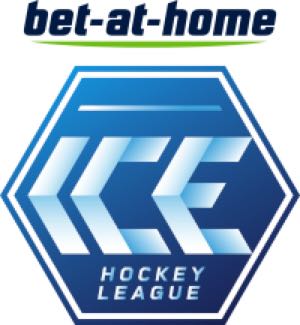 As the name suggests, this league covers more than one country in central Europe, with teams from Hungary, Italy and Slovenia joining those from Austria. It is the top-flight league in Austria and is usually referred to simply as the ICE Hockey League. Formed in 1923, it plays host to 14 teams and those from Austria compete for the Austrian Championship, whilst all other teams aim to become the League Champion. It has enjoyed numerous different sponsors over the years, so it is possible that you will have heard of it by another name.
As the name suggests, this league covers more than one country in central Europe, with teams from Hungary, Italy and Slovenia joining those from Austria. It is the top-flight league in Austria and is usually referred to simply as the ICE Hockey League. Formed in 1923, it plays host to 14 teams and those from Austria compete for the Austrian Championship, whilst all other teams aim to become the League Champion. It has enjoyed numerous different sponsors over the years, so it is possible that you will have heard of it by another name.
Deutsche Eishockey Liga
 The Deutsche Eishockey Liga is, as you might have surmised, the top-flight ice hockey league in Germany. It was created in 1994 and replace the Eishockey-Bundesliga as the most prestigious ice hockey division in the country. It is thought of as being one of Europe’s most prestigious divisions, behind only those of Sweden, Finland and Switzerland. Three clubs represent the country each season in the Champions Hockey League, though no German side has won the competition at the time of writing.
The Deutsche Eishockey Liga is, as you might have surmised, the top-flight ice hockey league in Germany. It was created in 1994 and replace the Eishockey-Bundesliga as the most prestigious ice hockey division in the country. It is thought of as being one of Europe’s most prestigious divisions, behind only those of Sweden, Finland and Switzerland. Three clubs represent the country each season in the Champions Hockey League, though no German side has won the competition at the time of writing.
Kontinental Hockey League
 It will come as a surprise to very few people that Russia has a competitive ice hockey league, which was formed in 2008. It is made up of 22 teams, 19 of which come from Russia, with Belarus, Kazakhstan and China each providing one team apiece. For a time, it was thought of as being the second-best ice hockey league anywhere in the world behind the NHL and in 2017 more than five million people turned up to watch matches take place during the regular season. The champion each season is awarded the Gagarin Cup.
It will come as a surprise to very few people that Russia has a competitive ice hockey league, which was formed in 2008. It is made up of 22 teams, 19 of which come from Russia, with Belarus, Kazakhstan and China each providing one team apiece. For a time, it was thought of as being the second-best ice hockey league anywhere in the world behind the NHL and in 2017 more than five million people turned up to watch matches take place during the regular season. The champion each season is awarded the Gagarin Cup.
The Stanley Cup
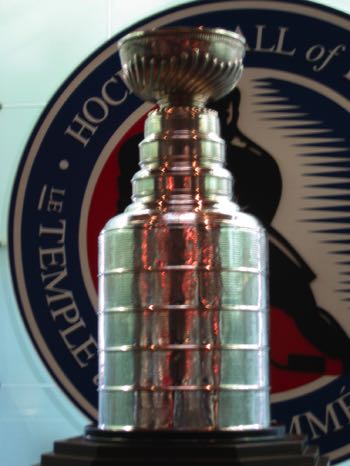
When it comes to ice hockey competitions, none are bigger than the Stanley Cup. Indeed, the International Ice Hockey Federation says that it is ‘the most important championships available to the sport’. The trophy itself, which is named after Lord Stanley of Preston, as commission as the Dominion Hockey Challenge Cup in 1892. It is awarded to the winner of the Stanley Cup Finals each season, with that being an alternate name for the National Hockey League’s play-off finals, which is competed over by the top three teams in each division as well as two wild cards per conference.
That means that 16 teams take part in the play-offs, with the top-ranked team in the conference playing against the lowest-ranked wild card in the first round, at the same time as the other division winner goes up against the highest-ranked wild card. The second and third placed teams also face one another. The winners in the first round meet in the second round, with the third round being made up of the Western Conference and Eastern Conference finals, at which point the conference winners move forward to the Stanley Cup Finals.
Compared to other sports and leagues, it is much more common to see an upset in the Stanley Cup Finals. It is also known for seventh game comebacks to happen, in which a side is 3-0 down heading into the fourth game but wins all of the remaining games. In terms of things you might want to think about when placing a bet, there have only been two occasions in the history of the league, at the time of writing at least, when no Canadian teams have made the play-offs, even though there are more teams from the US in the NHL.